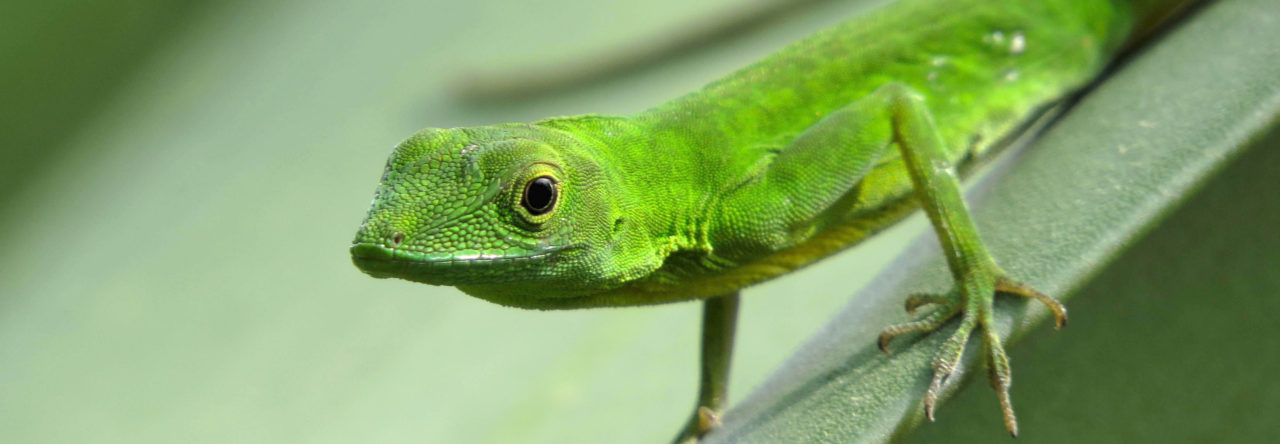Luke Mahler reported the amazing news (truth in advertising: I’m a co-author) that a large and very distinctive new anole has been discovered in the Dominican Republic. Here’s the abstract:
Discovery of a short-limbed giant Anolis from Hispaniola supports a deterministic model of island evolution and community assembly
We report the discovery of a species of giant anole from Hispaniola that provides new evidence for determinism in the evolution and assembly of Caribbean island Anolis faunas. The new species is most closely related to Hispaniolan ―crown-giant‖ ecomorph anoles (Anolis ricordii clade). However, it is ecomorphologically most similar to Cuban giant twig anoles of the Chamaeleolis clade: both are very large anoles with short limbs and a short tail that tend to utilize relatively narrow perches in cluttered habitats this discovery adds a new dimension to the phenomenon of among-island ecomorph matching that characterizes Greater Antillean anole faunas. In addition, phylogenetic comparative analyses suggest that key aspects of the similarity of Hispaniolan and Cuban giant twig anoles may be the product of evolutionary convergence. Being restricted to a narrow band of threatened mid-elevation forest near the border of the Dominican Republic and Haiti, this new species should be considered critically endangered.
- Evolution in Real Time on Lizard Island - March 23, 2025
- Spider Snags Adult Anolis osa - March 22, 2025
- An Homage to the Green Anoles of New Orleans - March 21, 2025


Skip Lazell
Wonderful! Now how to protect it. It will go great in the pet trade!
Daniel Scantlebury
Skip, I must say the threats facing this species are much more severe than the pet trade. Habitat encroachment/degradation and the seasonal collection of a key microhabitat feature are likely to wipe this species out of existence before poachers have any time to act.
Skip Lazell
Daniel, I do hope you will publish and publicize the facts and try to mobilize efforts to prevent the species’ demise! Skip
Ron S
I was recently in an area along Haitian border and there is rampant deforestation. Evidently, both Haitian and DR authorities are looking the other way when it comes to this problem. There is very little natural vegetation left in Haiti and tremendous pressure on whatever’s left. Thus, the ex-situ conservation of haitian herpetofauna needs to encouraged before these species disappear for ever, which many undoubtedly already have.